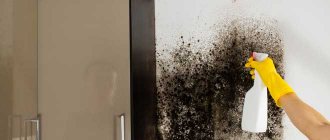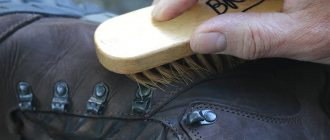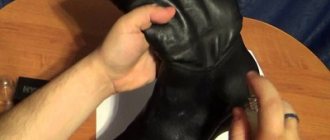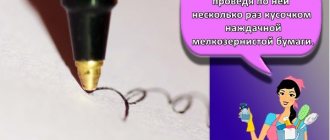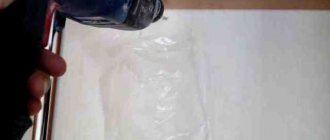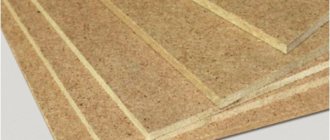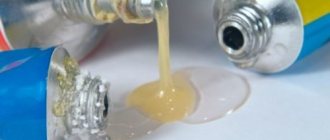Polyethylene is a material known to everyone; in everyday life it is usually used to create greenhouses and as waterproofing. But when working with it, the need for gluing often arises, but not many people know how to glue polyethylene. The material is difficult to glue, so special tools have been created to solve this problem. What can be used to seal polyethylene will be discussed below.
Glue for polyethylene - which one is best for home use
To glue polyethylene parts, special adhesive compositions have been developed. Using adhesives for gluing polyethylene has several advantages:
- Does not damage the material;
- Uniform pressure distribution;
- Possibility of connecting different parts;
- Fixation of individual zones can occur instantly.
At the same time, polyethylene and polypropylene are difficult to glue materials; only high-quality film adhesive can achieve reliable fixation at home. You need to choose the product carefully.
To glue polyethylene parts, special adhesive compositions have been developed.
Properties and features of polyethylene
Before gluing polyethylene, you need to understand its features. Polyethylene products provide excellent protection against moisture penetration, electrical protection, and also absorb radioactive exposure. They exhibit the highest resistance to chemical components, for this reason gluing polyethylene is a complex process.
The gluing process involves not only chemical reactions, but also the attraction of substances to each other due to the difference in their charges. How can we glue polyethylene together when it has similar properties? Chemists have been able to find means that help produce this effect. Adhesive for polyethylene film, canisters, and plastic pipes has special properties that allow the material to be bonded.
Polyethylene products provide excellent protection against moisture penetration, electrical protection, and also absorb radioactive exposure.
PVC film soldering technology
When consulting beginners, specialists pay attention to two points, without which it is extremely difficult to achieve a positive result; the situation is like this:
- At the first stage, you need to thoroughly clean the soldering area and degrease the surfaces so that the canvas does not stick to the ink.
- When connecting, ensure reliable fixation of the material until complete hardening.
The resulting microscopic holes after making the main connection are simply covered with high-quality sealants; it is important to avoid the appearance of folds, such excesses are difficult to eliminate.
This method has become popular when creating three-dimensional banners; it is easy to make 20 by 30 meter specimens from several blanks, and craftsmen also use polyethylene glue to create reservoirs of up to 500 cubic meters.
How to glue foamed polyethylene
This material is distinguished by its porosity and is used for insulation from heat, water and fumes. Low cost and ease of operation made it popular in construction work. A suitable substance for gluing foamed polyethylene is two-component solutions. The glue should be based on methyl acrylate, which has excellent adhesion properties.
Before gluing the polyethylene foam together, you should sandblast the surface of the object. You can attack it physically, such as with fire, or with chemicals, such as fluorine.
This material is distinguished by its porosity and is used for insulation from heat, water and fumes.
Review of effective brands and varieties for gluing polyethylene
There are many effective and reliable types of glue on the market today. Each of them is characterized by certain features.
BF-2
This product can be used for fixing plastic, metal objects, and ceramics. This glue is often used in restoration. The composition must not be used for dishes. This is due to the presence of toxic components in the composition - phenol and aldehydes. The glue is considered universal. It is characterized by chemical inertness and resistance to moisture.
BF-4
In terms of chemical stability, the product is identical to BF-2. However, the scope of application of the composition is different. BF-4 is used for fixing elastic materials that are subject to bending and vibration. These include leather, textolite, alloys. The substance also helps to glue wood and metals.
Two-component
This glue is characterized by high strength. The composition is considered very durable. It has a transparent texture and does not harden too quickly. This takes 4 minutes. Thanks to this, you can take your time while working. The composition reliably fixes metal objects. You can also use it to glue plexiglass.
Epoxy
This substance is produced on the basis of a hardener and polyepoxy resin. It is used to repair fiberglass items. Using epoxy glue you can fix wood, porcelain, glass, and metal. It is also used for various alloys.
The substance is used to fill cracks and voids. It helps restore the shape and volume of objects. The seam is characterized by resistance to oil, water, and gasoline.
Application of acrylate glue with filler
This technique is chosen for working with materials that have poor adhesion. Liquids are difficult to adhere to polyethylene material. Adhesives with tiny glass beads are used to hold liquids in one area. This way, the necessary area for gluing is obtained, and after hardening, tightly fixed parts are obtained. Before gluing the oilcloth together, it is degreased and dried.
The adhesive composition is applied with a special mixer. Setting occurs in 2-3 minutes.
This technique is chosen for working with materials that have poor adhesion.
Preparation for gluing
Before you begin gluing surfaces, you must carefully prepare them. Otherwise, the result will be negative and even the best glue will not hold parts of the whole. Preparation consists of several stages: cleaning, degreasing, surface activation.
Cleaning
Cleaning can be carried out with any detergents. Its essence is to get rid of severe contamination of the surface of the film or polyethylene. If the surface cannot be washed, then you can use physical cleaning with abrasive agents.
Degreasing
After the surface of the material has been completely cleaned of particles of dust and dirt, it must be degreased. The degreasing operation in most cases is carried out with water vapor, wiping the surface with a cloth that is pre-wetted with a solvent.
The process is repeated until the cloth remains clean after being passed over the surface of the material. The method of processing in solvent vapors is also effective.
Degreasing must be carried out in the most thorough manner; in any case, it would not be amiss to rinse, wash the surface with a fresh portion and leave it at that.
However, if more complex methods of surface preparation are used, degreasing in any case is a mandatory first stage of processing.
After degreasing by any means, cleaning compounds or detergent solutions must be used to remove dirt and other inorganic residues.
Surface activation by corona discharge
Surface activation
After degreasing has occurred, it is necessary to activate the surface. For this, it is recommended to use special epoxy compounds.
In some cases, activation is carried out using a gas-discharge lamp. The latter method is not so popular and requires additional equipment.
How to glue with epoxy glue
The surface is first degreased; application of HDPE glue is possible only on a dry surface. Both items are treated with special substances; it is safer to choose highly concentrated potassium permanganate. After this stage, they again wait for the products to dry. Epoxy is prepared according to the manufacturer's instructions. Glue is applied to both objects and they are pressed against each other. Secure in this position. Provided that the temperature varies from +30 to +45 degrees, it will take several hours to complete polymerization. At room temperature 24 hours.
During work, you need to wear protective clothing and gloves, it is advisable to wear a respirator, and good ventilation must be provided in the room. To prevent resin from getting into your eyes, use safety glasses.
During work, you need to wear protective clothing and gloves, and it is advisable to wear a respirator.
Welding film for a greenhouse
Step-by-step instructions for gluing polyethylene when creating a structure in the garden or in the local area look like this:
- Two pieces of material are thoroughly cleaned of dirt.
- If necessary, place filler between layers.
- They start heating up, after melting the edges you need to stop and let them “settle”.
- Without delaying the process for a long time, dock the surface and compress tightly.
- Allow the seam to cool.
To implement your plans outdoors, it is better to resort to using a special construction hair dryer, which can raise the temperature to 250 degrees, and the modes can be adjusted depending on the weather.
Alternative Methods
Other methods can be used to connect parts. An iron is a suitable option for gluing plastic film together. Perform the following steps:
- The appropriate heating temperature is selected through testing.
- The film parts are placed on top of each other to prevent sticking to the sole of the iron; paper is used.
- They run the device over the paper.
To prevent the paper from sticking to the sole, simply moisten it with a damp cloth.
An iron is a suitable option for gluing plastic film together.
Soldering iron, it is more convenient to use a special nozzle. Or a rod of aluminum is used as a sting; the contact area is 2 millimeters. The process includes:
- Degreasing the item.
- Securing sheets.
- The device is passed along the joint part.
If you need to solder a large surface, then a metal plate should be used as a tip; aluminum and copper are suitable.
Soldering iron, it is more convenient to use a special nozzle.
Flame method. Matches, candle, burner are suitable. By placing the flame along the seam, gluing is performed. Stages of work:
- Degreasing.
- The material is secured with bars.
- The place where the product will be welded is released to the edge by 4-5 millimeters.
- They walk through this part with flame.
- A seam is obtained in the form of a roller.
By placing the flame along the seam, gluing is performed.
Polyethylene adhesive is a reliable method of fastening polyethylene parts. The material itself has special properties that do not allow it to be bonded with conventional adhesive solutions; gluing it is a complex process, so the choice should be made in favor of high-quality products. It is easy to glue various objects with special solutions, but it is important to remember safety precautions when working with toxic substances; a person must protect himself by wearing protective clothing and gloves.
Characteristics of reinforced film for greenhouses
The indicators of the material are most often paid attention to by owners of country houses who want to purchase film and not be upset about the service life; how long the greenhouse will last directly depends on the choice of canvas. Experts advise looking at the following characteristics:
- Roll length.
- Width.
- Density per 1 cubic meter cm.
- Color design.
The polymer material must transmit at least 75% of sunlight so that the gardener can save on additional lighting. In bad weather, the frame can remain undamaged only if you buy the most durable film samples, and over time, the destructive effects of the environment will not affect the integrity of the canvas.
Step-by-step procedure for gluing elements
Before you start gluing polypropylene, study the instructions. As a rule, recommendations and procedures, as well as compliance with proportions for two-component formulations, are indicated by the manufacturer directly on the packaging. However, there is a general principle of action:
- The surface must be cleaned and degreased, for example, with a solvent for polypropylene;
- The glue is applied in a thin layer to all surfaces that require subsequent gluing. This action is relevant unless otherwise specified by the manufacturer;
- Fixing the parts should take at least three minutes.
After treatment, you should not move or disturb the parts in any way for a couple of hours until they are completely dry.
The glue is applied in a thin layer to all surfaces that require subsequent gluing.
How to properly glue polypropylene pipes together
The question is not only how to fasten polypropylene, but also how to do it. The work is specific and requires certain tools:
- Device for cutting plastic pipes;
- Sandpaper;
- Glue gun;
- Directly the glue itself;
- Brush with natural bristles.
How to do:
- First you need to cut the pipes to the appropriate size.
- Using sandpaper, clean the cut areas, removing roughness and burrs.
- Make notes.
- Degrease the surface.
- Apply glue. If the sealant for propylene is packaged in a tube, it is applied using a glue gun. In the jar, glue is applied with a brush.
- Then connect the parts after maintaining the specified time.
- Remove excess substance using a regular napkin.
The quality of gluing is checked after 24 hours. Craftsmen additionally install rubber or wire clamps. In plumbing structures, after this time it is already possible to run water under pressure for testing. It is not uncommon for subsequent defects to appear in the work. This may be caused by a slow pace of work, uneven gluing, or distortions in the process. It is important to follow the manufacturer's direct timing instructions.
The quality of gluing is checked after 24 hours.
Features of penofol fastening
Penofol (isolon) is produced by special foaming of polyethylene. The insulation is covered with aluminum foil, which maximizes heat retention. It is used for internal and external work, in finishing production mechanisms, preserving heat in pipelines or air conditioning systems. It comes in rolls and individual plates. It may have additional characteristics – thickness, color. The bonding of foil to the plane of foamed polyethylene can be chemical or physical (cross-linked).
- small thickness;
- environmentally friendly;
- does not require additional skin and respiratory protection;
- there is no need for special tools;
- ease of fastening.
Glue is used for penofol with foil on one side.
Double-sided insulation is used for thermal insulation of loggias, garages, and pipes. They are attached to the sheathing or purchased polyethylene foam with a self-adhesive surface.
Due to the lightness of the insulation material, the load-bearing capacity of the adhesive is not so important.
Useful tips
Recommendations from specialists will help to glue polyethylene together efficiently, firmly and reliably, so that the products will serve for a long time:
- If very high demands are placed on the strength of the seam being formed, then the optimal method for gluing polyethylene is welding. The seam will be strong if it is not allowed to cool suddenly.
- Before using filled acrylate adhesive, no mechanical preparation of the surface is required. With the exception of degreasing and cleaning, which are carried out before gluing any surfaces.
- The seam formed after gluing the film with acrylate glue should be kept at a temperature from +15 to +70˚ C for 4-5 hours.
- Epoxy glue is difficult to work with, and the bond strength is not very good.
Tip You can create your own recipe for polyethylene glue by adding a little crushed chalk or cement to the acrylate glue. The composition can be of high quality and at the same time inexpensive.
The best option for gluing polyethylene is welding, since the result is a strong, reliable seam. It is not always advisable to use adhesive compositions, this is explained by the fact that polyethylene is a chemically inert material with weak adhesive properties.



